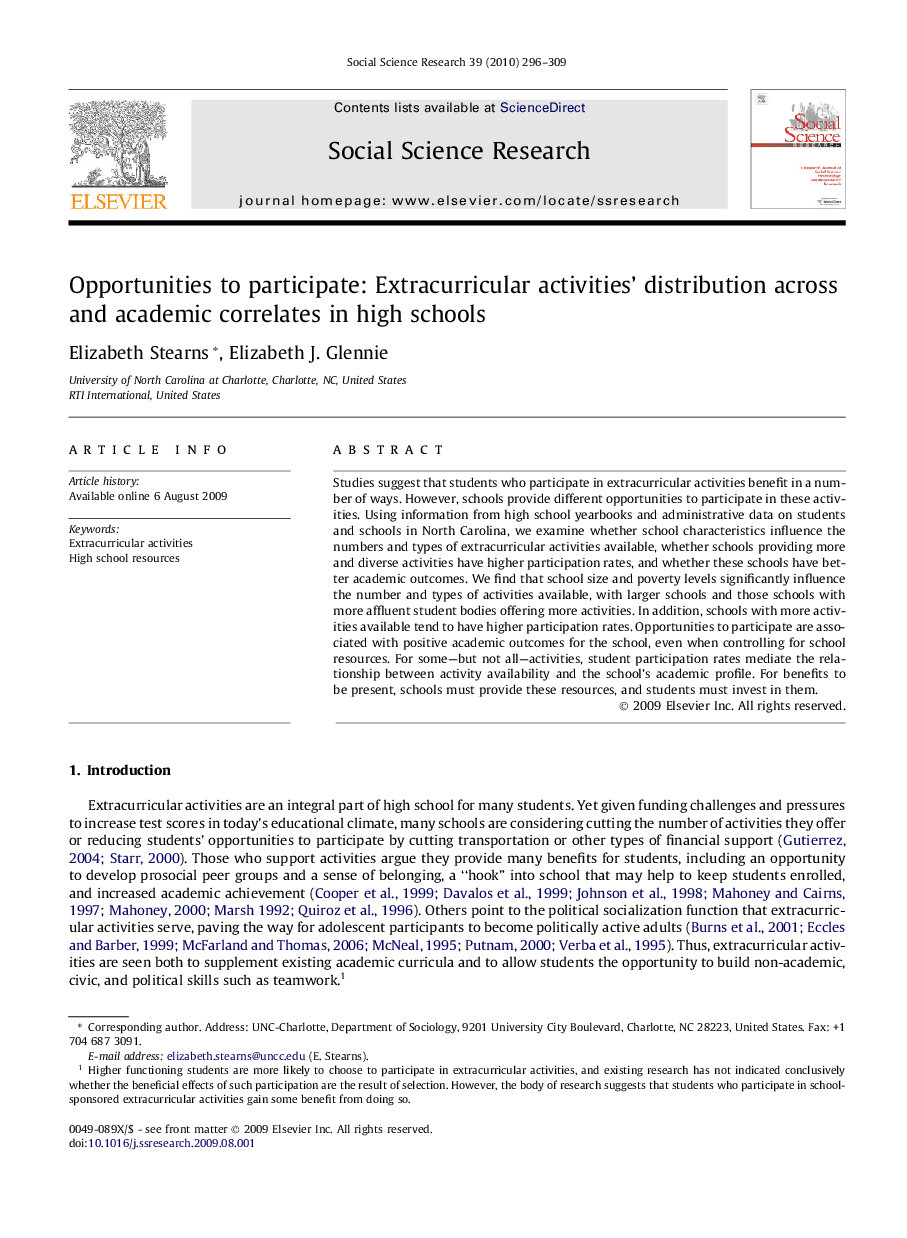| کد مقاله | کد نشریه | سال انتشار | مقاله انگلیسی | نسخه تمام متن |
|---|---|---|---|---|
| 956369 | 928326 | 2010 | 14 صفحه PDF | دانلود رایگان |

Studies suggest that students who participate in extracurricular activities benefit in a number of ways. However, schools provide different opportunities to participate in these activities. Using information from high school yearbooks and administrative data on students and schools in North Carolina, we examine whether school characteristics influence the numbers and types of extracurricular activities available, whether schools providing more and diverse activities have higher participation rates, and whether these schools have better academic outcomes. We find that school size and poverty levels significantly influence the number and types of activities available, with larger schools and those schools with more affluent student bodies offering more activities. In addition, schools with more activities available tend to have higher participation rates. Opportunities to participate are associated with positive academic outcomes for the school, even when controlling for school resources. For some—but not all—activities, student participation rates mediate the relationship between activity availability and the school’s academic profile. For benefits to be present, schools must provide these resources, and students must invest in them.
Journal: Social Science Research - Volume 39, Issue 2, March 2010, Pages 296–309